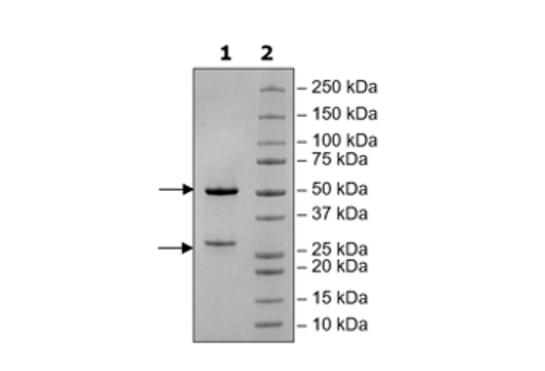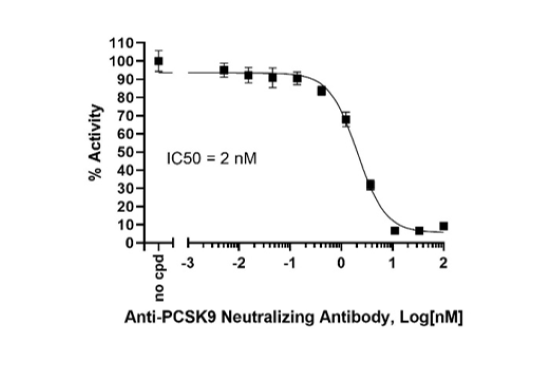Anti-PCSK9 Neutralizing Antibody
Catalog #
71207
$555
*
●
●
Purchase
Description
Neutralizing recombinant human antibody (IgG1) recognizing the LDLR binding region of human PCSK9.
This product has been cited 7 times.
●
Synonyms
proprotein convertase subtilisin/kexin type 9, PCSK-9, FH3, Proprotein convertase 9, Subtilisin/kexin-like protease PC9, PC9, FHCL3, NARC1, LDLCQ1, Neural apoptosis-regulated convertase 1, NARC-1, HCHOLA3, PSEC0052
●
Product Data Gallery
Product Info
Storage and Usage
Citations7
Species
Human
Isotype
IgG1
Clonality
Monoclonal (human)
Host Species/Expression System
HEK293
Purity
≥90%
Purification
Protein A affinity
Format
Aqueous buffer solution
Formulation
8 mM Phosphate, pH 7.4, 110 mM NaCl, 2.2 mM KCl, and 20% glycerol
MW
Heavy Chain: 50 kDa; Light Chain: 23 kDa
Background
PCSK9 is a crucial player in the regulation of plasma cholesterol homeostasis. It binds to low-density lipid receptor family members: low density lipoprotein receptor (LDLR), very low density lipoprotein receptor (VLDLR), apolipoprotein E receptor (LRP1/APOER) and apolipoprotein receptor 2 (LRP8/APOER2), and promotes their degradation. Acts via a non-proteolytic mechanism to enhance the degradation of the hepatic LDLR through a
clathrin LDLRAP1/ARH-mediated pathway. May prevent the recycling of LDLR from endosomes to the cell surface or direct it to lysosomes for degradation. Can induce ubiquitination of LDLR leading to its subsequent degradation. Inhibits intracellular degradation of APOB via the autophagosome/lysosome pathway in a LDLR-independent manner. Involved in the disposal of non-acetylated intermediates of BACE1 in the early secretory pathway. Inhibits epithelial Na(+) channel (ENaC)-mediated Na(+) absorption by reducing ENaC surface expression primarily by increasing its proteasomal degradation. Regulates neuronal apoptosis via modulation of LRP8/APOER2 levels and related anti-apoptotic signaling pathways.
References
1. Banerjee, Y., et al., N Engl J Med. 2012 Jun 21,366(25):2425-6.
2. Maxwell, K.N., Breslow, J.L., Circ Res. 2012 Jul 20,111(3):274-7.



